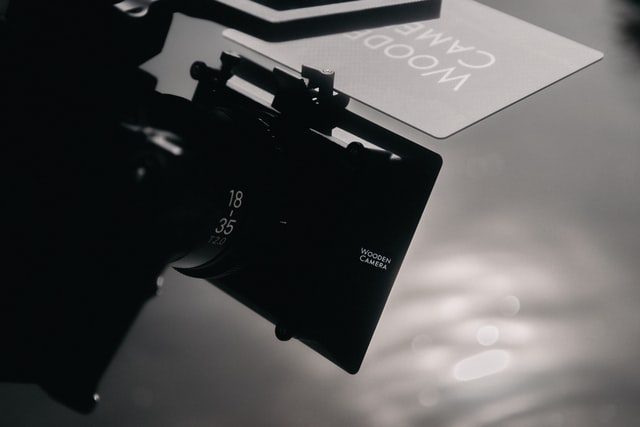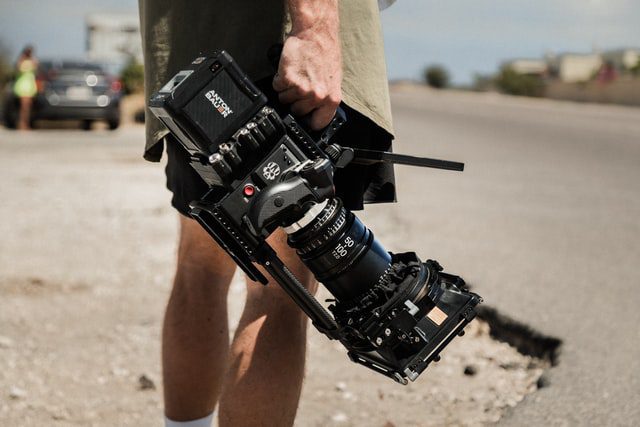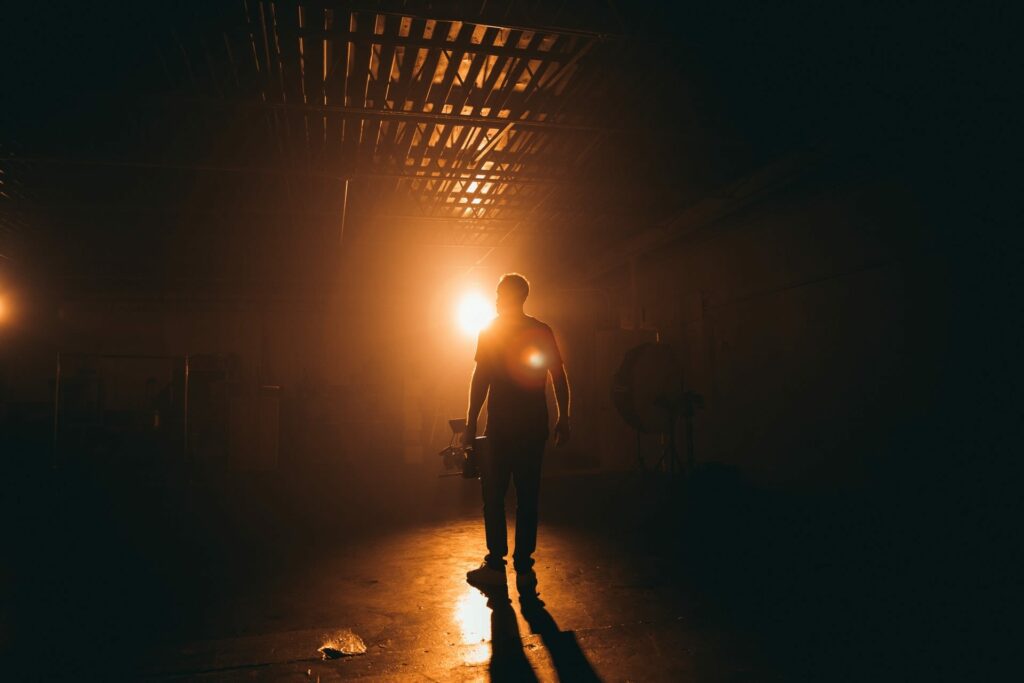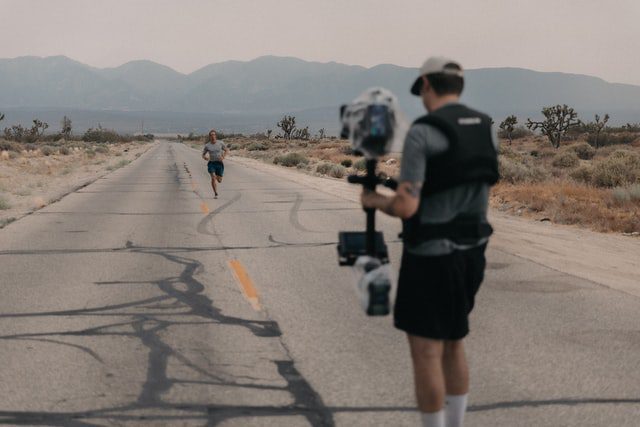The cinematographer is a film director who captures the images and sounds of the movie, as well as how they are edited together.
The cinematographer also helps to create the style of a movie through camera angles, lighting, filters, and lens selection.
Cinematography is one of the most important parts of filmmaking since it affects all other aspects.
WHAT DOES A CINEMATOGRAPHER DO
What Does a Cinematographer Do?
A cinematographer combines the work of a director, editor, and photographer to create dynamics on screen.
They have creative control over lighting, camera movement, lenses used, and more.
The term cinematography came into use in 1894 with the invention of motion pictures as an alternative to “moving photography.”
Ever watched a movie and found yourself swept away by the stunning visuals?
That’s the magic of a cinematographer at work.
They’re the visual storytellers, painting with light, shadow, and camera angles to bring a director’s vision to life.
In the world of filmmaking, the cinematographer, or director of photography, is the maestro behind the camera, orchestrating every frame to ensure the story unfolds with the intended emotional impact.
We’ll jump into the nuances of their craft, from selecting the right lenses to choreographing intricate camera movements.
Join us as we peel back the curtain on the role of the cinematographer, exploring how they shape the look and feel of a film and why they’re essential to the movie-making process.
Get ready to gain a deeper appreciation for the art that captivates our eyes and hearts on the silver screen.
The Role Of A Cinematographer
As visual architects of film, cinematographers shoulder a myriad of responsibilities.
They translate the script into arresting imagery, crafting the visual narrative piece by piece.
It’s their expertise that determines the mood and atmosphere, which is critical in storytelling.
Their decisions profoundly affect the film’s look, dictating how audiences will emotionally connect with the story.
Beyond aesthetics, a cinematographer’s job is complex and technical.
They’re tasked with making decisions on:
- Lighting techniques – ensuring each scene is lit to convey the right emotions and continuity,
- Camera equipment – choosing the best tools for the desired outcome, including cameras, lenses, and filters,
- Shot composition – artfully framing each scene to reflect the story’s dynamics and guide the viewers’ attention.
In collaboration with the director, they breathe life into the vision.
By skillfully balancing artistic sensibilities with technical prowess, cinematographers are instrumental in giving movies like The Shawshank Redemption and Blade Runner their iconic looks.
Mastery over elements such as depth of field and color grading enables them to create a sense of realism or otherworldliness as required.
Through the lens, cinematographers have a powerful influence on the film’s narrative pace.
Rapid camera movements might indicate a thrilling chase, while a slow zoom can intensify a moment’s emotional impact.
It’s their choreography that audiences eventually see on screen, and it’s a language that speaks louder than words.
By meticulously planning every shot, they ensure that each transition is seamless and each angle purposeful.
From pre-production to the final cut, the cinematographer’s hand is evident in every frame.
Operating at the intersection of art and technology, they must be as proficient with digital software as they are with traditional camera equipment.
In essence, the multifaceted role of cinematographers is foundational to the art of filmmaking.
Their craft is the alchemy that transforms written pages into moving images, evoking emotions that resonate with viewers across the globe.
Capturing The Director’s Vision
Cinematographers are pivotal in the process of bringing a director’s creative vision to the screen.
They work closely with the director, interpreting the script to craft visual representations that align with the story’s tone and atmosphere.
Our role involves translating abstract ideas into concrete images.
We ensure that every frame not only tells a part of the story but also enhances the thematic elements, guiding the audience’s emotional journey through color, light, and composition.
The relationship between the cinematographer and the director is built on communication and trust.
Before a single frame is shot, extensive discussions take place where we jump into the director’s headspace, grasping their conceptual ideas and expectations.
We focus on the following aspects to capture the director’s vision:
- The thematic essence – the mood, symbolism, and deeper meanings behind scenes,
- Visual consistency – ensuring that each shot contributes to the film’s overall style,
- Technical execution – selecting the right camera movements and angles to reflect the director’s intent.
During production, we are constantly making decisions that affect the final look of the film.
Choices like whether to use a hand-held camera for a more intimate feel, or a steady cam for smooth, dynamic shots are made with the director’s vision in our minds.
Collaboration extends beyond just the director as well.
We coordinate with various departments such as production design, costume, and makeup to ensure that every visual element complements the director’s envisioned narrative.
Our expertise in visual storytelling enables us to adapt to the director’s preferences, whether it’s achieving a sense of realism or crafting a more stylized, expressive look.
Every decision, from lens selection to the lighting setup, is an opportunity to contribute to the storytelling process.
Through meticulous planning and creative execution, we turn the written word into a captivating visual experience.
Our craft is not just about recording what’s in front of the lens, but about elevating the story to resonate with audiences on a deeper level.
Lighting Techniques
Understanding The Basics
We recognize lighting as one of the most powerful tools at a cinematographer’s disposal.
It shapes the mood, draws attention to key elements, and creates depth within the scene.
Crafting The Mood
Our use of light tells a story in itself.
From the harsh shadows in a noir film like Sin City to the soft, dreamily lit scenes in La La Land, lighting sets the scene’s emotional tone.

Highlighting The Subject
Through careful lighting design, we ensure the main subjects stand out.
Positioning lights strategically can emphasize characters or objects, guiding the audience’s focus where we want it.
Light And Shadow Interplay
We’re experts at manipulating the balance between light and shadows to add mystery or drama.
Shadows can conceal or reveal elements within the frame, playing a crucial role in visual storytelling.
Techniques In Practice
Some common lighting setups we use include:
- Key Light – the main source of light, usually positioned to one side of the camera,
- Fill Light – used to soften shadows caused by the key light,
- Backlight – helps to separate the subject from the background,
- Practical Lights – any visible sources of light within the scene that also illuminate the shot.
Advanced Techniques
High Dynamic Range (HDR) cinematography is a game-changer for us.
It allows us to capture a greater range of luminance, bringing out detail in both the brightest and darkest parts of the image.
The Role Of Equipment
Our selection of lights – from tungsten to LED – and modifiers like diffusers and gels are essential.
They give us the flexibility to fine-tune the lighting to our exact requirements.
Continuous Innovation
With technological advancements, we’re constantly adapting, learning new techniques, and updating our approach to lighting in film.
This commitment keeps our work at the cutting edge, ensuring that the visuals remain engaging and impactful.
Camera And Equipment Choices
Selecting the right camera and equipment is crucial in translating the director’s vision onto the screen.
We understand that the choice of camera impacts everything from the film’s look to the workflow in post-production.
Different projects may require different types of cameras, such as:
- Digital Cinema Cameras for their high dynamic range and resolution,
- DSLRs for more nimble setups and low-budget projects,
- Action Cameras for capturing high-intensity sequences with agility.
Lenses are equally critical in shaping the visual narrative.
While the camera captures the image, it’s the lens that portrays the director’s story, painting each frame with its unique characteristics.
Choices range from wide-angle lenses for expansive scenes to telephoto lenses for intimate close-ups.
Lighting equipment, too, cannot be understated – the right lighting kit can dramatically transform a scene.
Our toolkit often extends beyond the camera itself, diving into the realms of stabilization and movement.
Tools such as:
- Gimbals for smooth tracking shots,
- Cranes for dynamic aerial perspectives,
- Sliders for subtle horizontal movements.
These are essentials in our cinematic armory, enabling us to navigate through scenes seamlessly.
also, the integration of cutting-edge technology like drones expands our capacity to deliver stunning aerial footage, previously the domain of high-budget productions.
Audio equipment is also a pivotal component of our setup.
Capturing clear and crisp sound is
We always ensure to kit ourselves out with:
- Boom microphones for controlled environments,
- Lavalier mics for capturing dialogue,
- Digital recorders for high-quality sound recording.
These tools allow us to preserve the authenticity of the performances and the atmosphere of the set.
The marriage of visuals and sound is what pushes our films beyond the ordinary.
Camera and equipment choices are shaped by a multitude of factors including the script, the director’s style, location constraints, and budget considerations.
We pride ourselves on striking the perfect balance between artistic intent and technical feasibility, ensuring that our equipment serves the story above all else.
Our goal is to create a visual and auditory experience that resonates with viewers, regardless of the complexities behind the scenes.
Collaborating With The Director And Production Team
We understand that the heart of a cinematic masterpiece often lies in the collaborative synergy between the cinematographer and the director.
Our role extends beyond mere camera operation – we serve as the director’s visual confidant, translating their narrative into compelling visual language.
Together, we decipher the story’s aesthetic and choose the appropriate camera and lens combination that aligns with the director’s vision for films like Inception or The Grand Budapest Hotel.
Working closely with the production team ensures that every visual aspect supports the storyline.
We must consider scenic locations, practical effects, and production design to ensure a seamless visual flow.
From the hues of lighting to the subtlety of shadows, every detail is deliberated to capture the essence of the narrative.

We’re deeply involved in pre-production meetings and location scouts, often advising on logistical considerations that could impact the shooting schedule or budget.
Our technical expertise in equipment capabilities often guides pivotal decisions that affect the film’s look and feel.
Here are some key areas we focus on:
- Scene composition and shot framing,
- Camera movement and angle,
- Lighting setups and color schemes,
- Visual consistency throughout the film.
By barring no efforts in communication and staying in lockstep with both the director and the production crew, we ensure the technical and artistic aspects of the film are in perfect harmony.
Whether it’s a fast-paced action sequence or a subtle, dialogue-driven scene, we’re there to capture the moment in its most authentic form, always keeping in mind the power of storytelling through visuals.
What Does A Cinematographer Do – Wrap Up
We’ve seen that the role of a cinematographer is pivotal in the filmmaking process.
They’re the master visual storytellers who bring the director’s vision to life ensuring every frame aligns with the story’s emotional core.
With their expertise in lighting camera angles and shot composition they create the visual poetry that captivates audiences.
Their work is a blend of art and technical skill a dance between creativity and practicality.
It’s their keen eye that weaves the visual tapestry of a film making the cinematographer an indispensable part of the cinematic experience.

Frequently Asked Questions
What Is The Role Of A Cinematographer In Film Production?
A cinematographer, also known as a director of photography, is responsible for capturing the film’s visuals.
They translate the director’s vision into compelling images, deciding on camera movements, lighting, and framing to tell the story effectively.
How Does The Cinematographer Collaborate With The Director?
The cinematographer works closely with the director as a visual confidant, ensuring that the film’s narrative is conveyed through the visual style.
They engage in pre-production discussions and location scouts to align their artistic approach with the director’s vision.
What Factors Does A Cinematographer Consider During Filmmaking?
Cinematographers consider numerous factors including scenic locations, camera movement, lighting setups, shot framing, and visual consistency, ensuring each supports the storyline and artistic direction of the film.
What Is The Importance Of Camera And Equipment Choice In Cinematography?
Choosing the right camera and equipment is crucial in cinematography as it affects the film’s visual storytelling.

Is The Cinematographer Involved In The Post-production Process?
While the cinematographer’s primary role is during the shooting of the film, they often advise during post-production, particularly on color grading and visual effects, to maintain visual consistency throughout the film.


